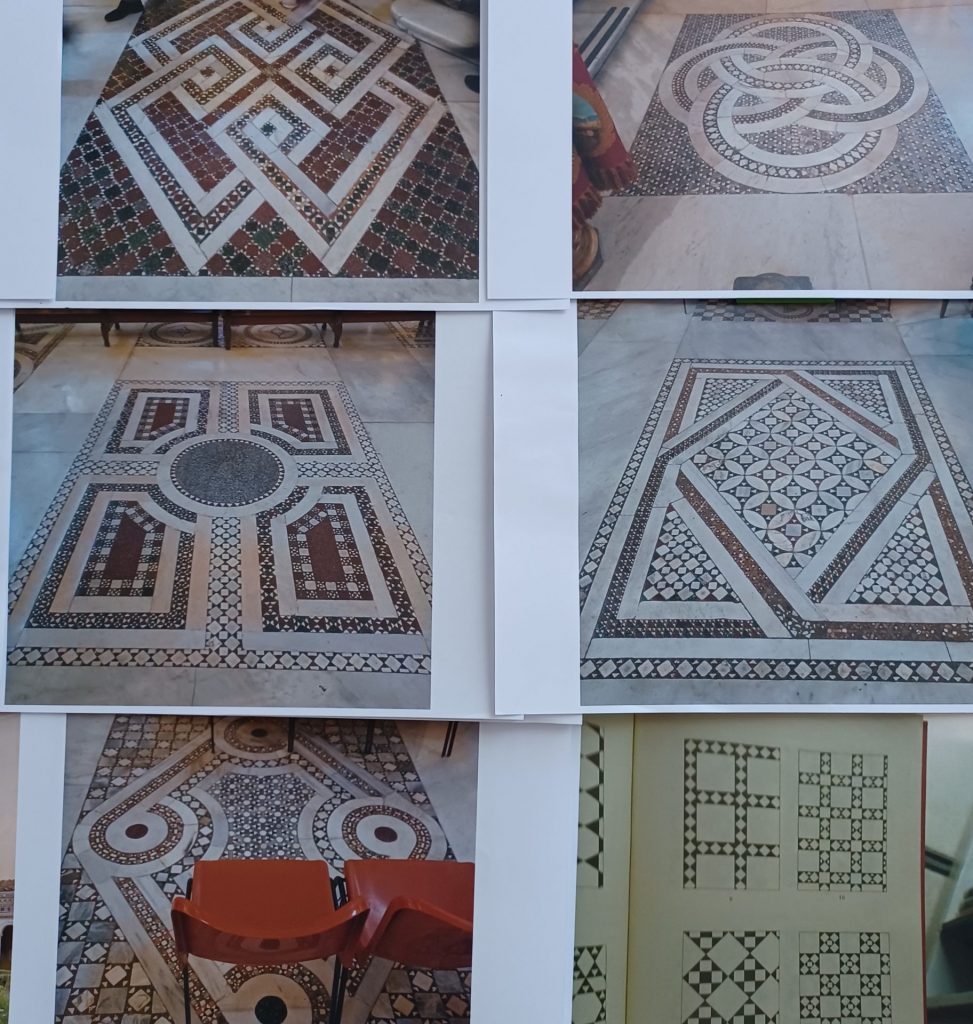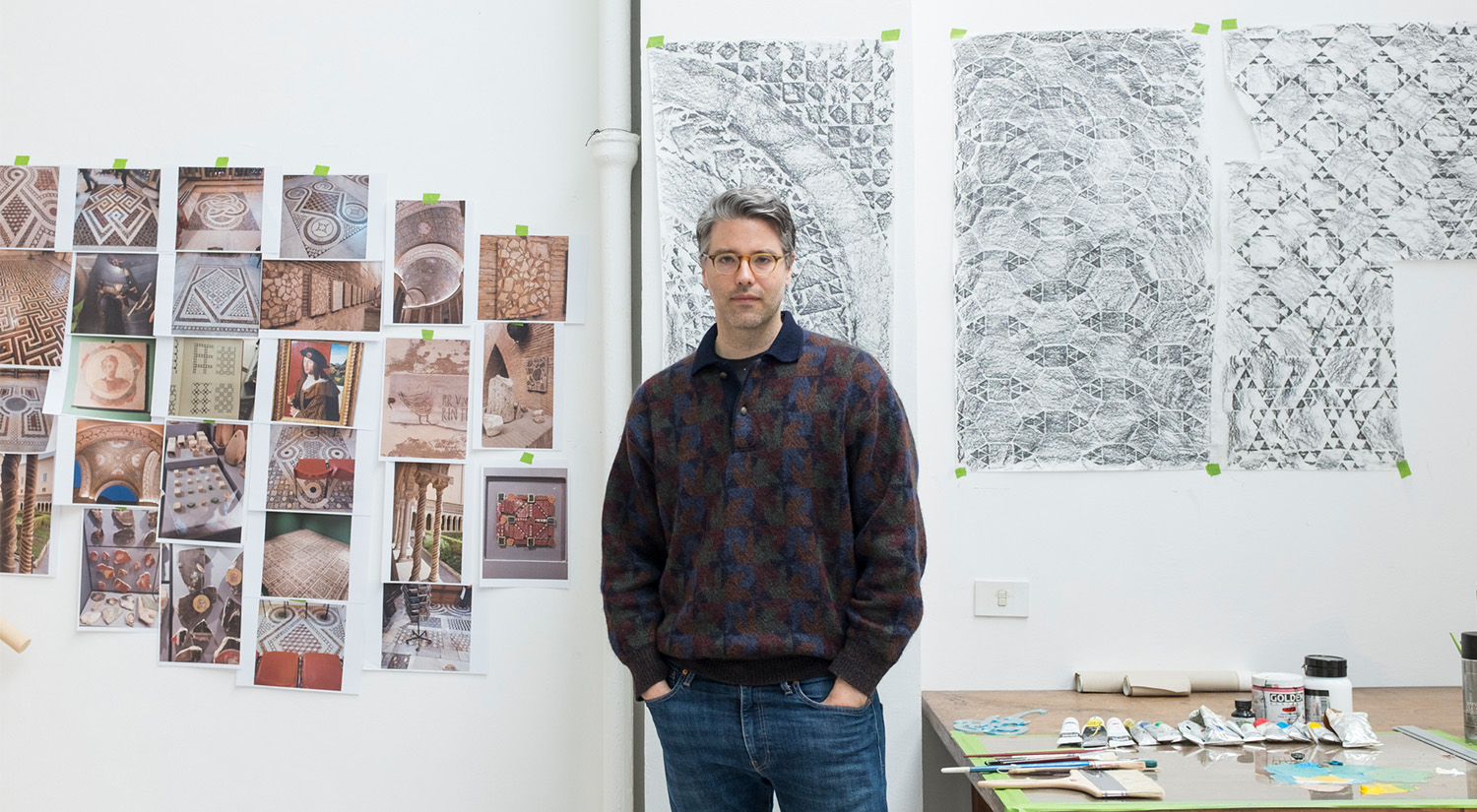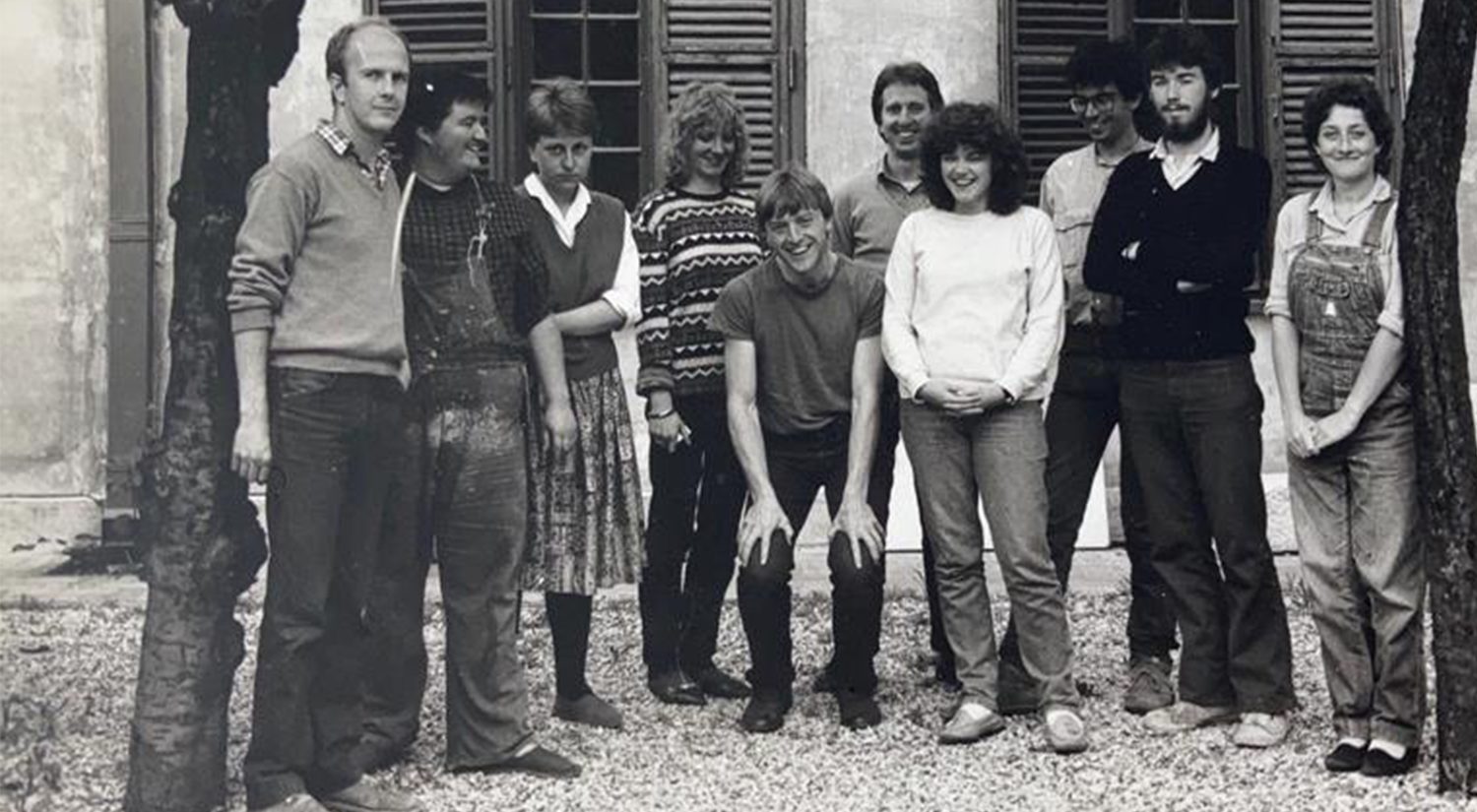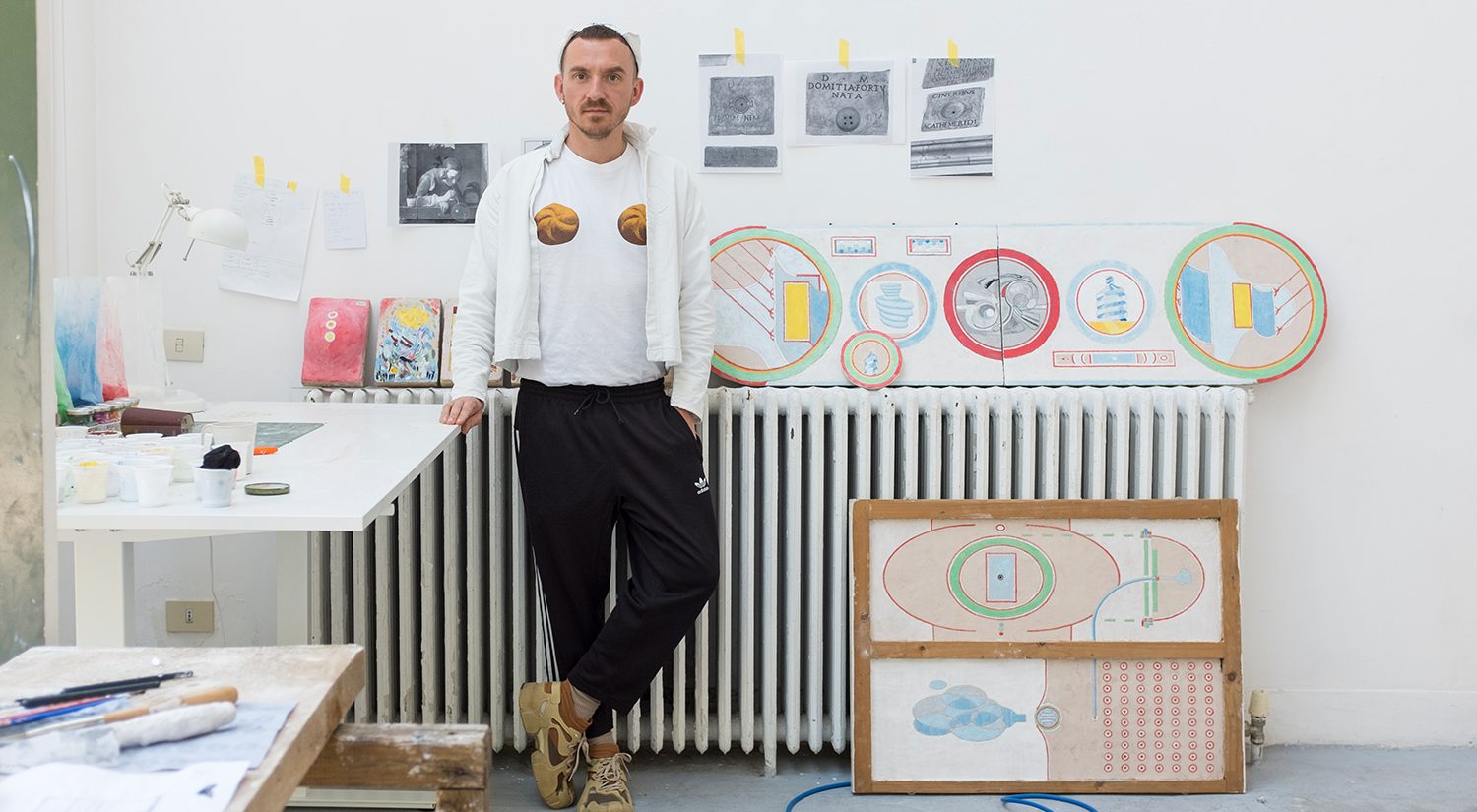An interview with Luke Burton, Abbey Fellow in Painting, in which he speaks about the work he has produced during his residency at the BSR from January – March 2023, ahead of the Winter Open Studios.
Your work, often featuring archetypical images is now developing toward another symbolic level, using language. How is this research evolving in Rome?
I’ve been thinking about the many connections between language and painting – Rome is challenging me to reflect on, and develop, these ideas. At first, I focused upon the relationship between style and language. Style is something that I consider to be a profoundly strange concept – it is by nature both tantalising and elusive. For this reason, I was drawn to the ‘self-conscious’ nature of Mannerist painting and fascinated by the style that was fundamentally about style. Mannerist painters approached representing the figure in flattened and distorted ways – often, when you look at a Mannerist painting, you see the artist testing the robustness of forms, asking what the subject can endure.
I see language being connected to style in art through the contradictions between privacy and communicability. We often describe artists as having their own private language, despite language being something we inherently share. Often, a painter is seen to have this sense of privacy through their own idiosyncratic style; something that the similarities between the Italian word ‘maniera’ (style) and ‘mano’ (hand) state explicitly. However, style is also something, much like archetypal forms or symbols, that, historically at least, must be agreed upon through a fuzzy kind of consensus developing collectively and over time. In other words, this private language is by nature public-facing and shared – not so private at all.
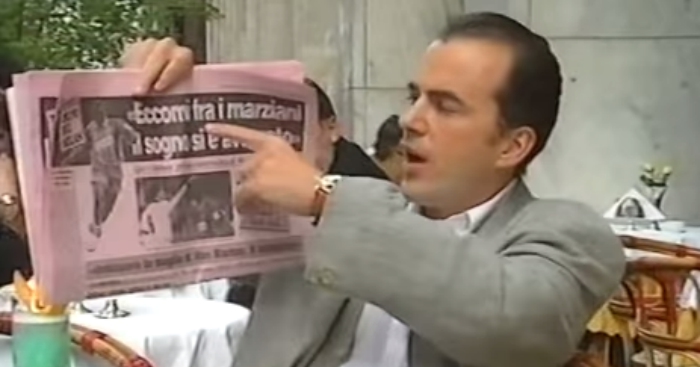
The experience of working in a city filled with archetypal classical imagery has brought archetypes into this unfolding conversation about language and painting. I have been fascinated by the way that so many classical symbols have an inherent dualism or polyvalence – these familiar archetypes seem to hold so much meaning! Paradoxically, however, this classical imagery has an emptiness resulting from both its overdetermined quality and the fact that its significance is apparent only to the specialist. Living and working in Rome is forcing me to confront tricky questions that feel mutable and provocative, like style itself. I can see my painting taking on these qualities through the appearance of isolated floating figures and of forms with various competing styles within the same picture.
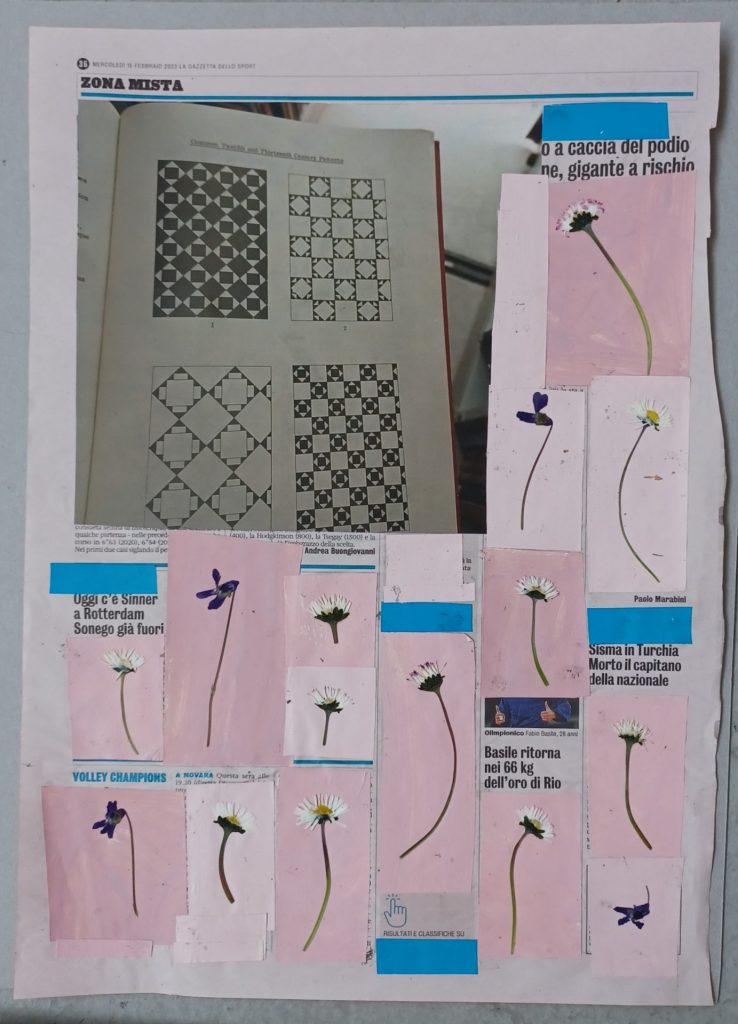
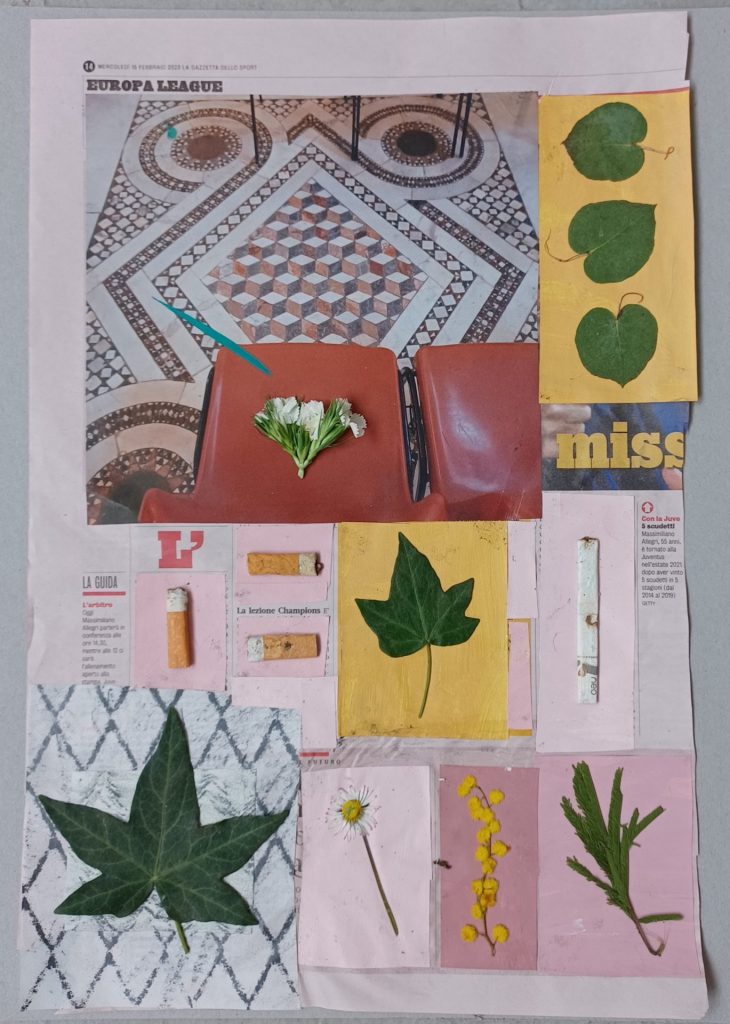
While in Rome, I am also thinking a lot about crosswords – both as images and as models for an organising principle for paintings. Crosswords use an inherently geometric and decorative form as a field on which to play the game. I like the way crosswords have this mirroring symmetry and suggest a rationalised space and a set of words/images that are completely interdependent but also somewhat randomised and therefore non-hierarchical. They are also a very emphatic abstract form – you cannot see a crossword without thinking of a crossword despite the fact that they are merely made from rows of black and white squares. These ideas have spilled over into an interest in Settimana Enigmistica, a weekly digest of word games, including many variations of crosswords, but also, significantly, Rebus puzzles, which create words or phrases through combinations of pictures and individual letters. I have started to think more about the history of the rebus – their ancient origins, heraldic associations and modern iterations – as a way to approach the complex relationship between image and language unfolding in my work.
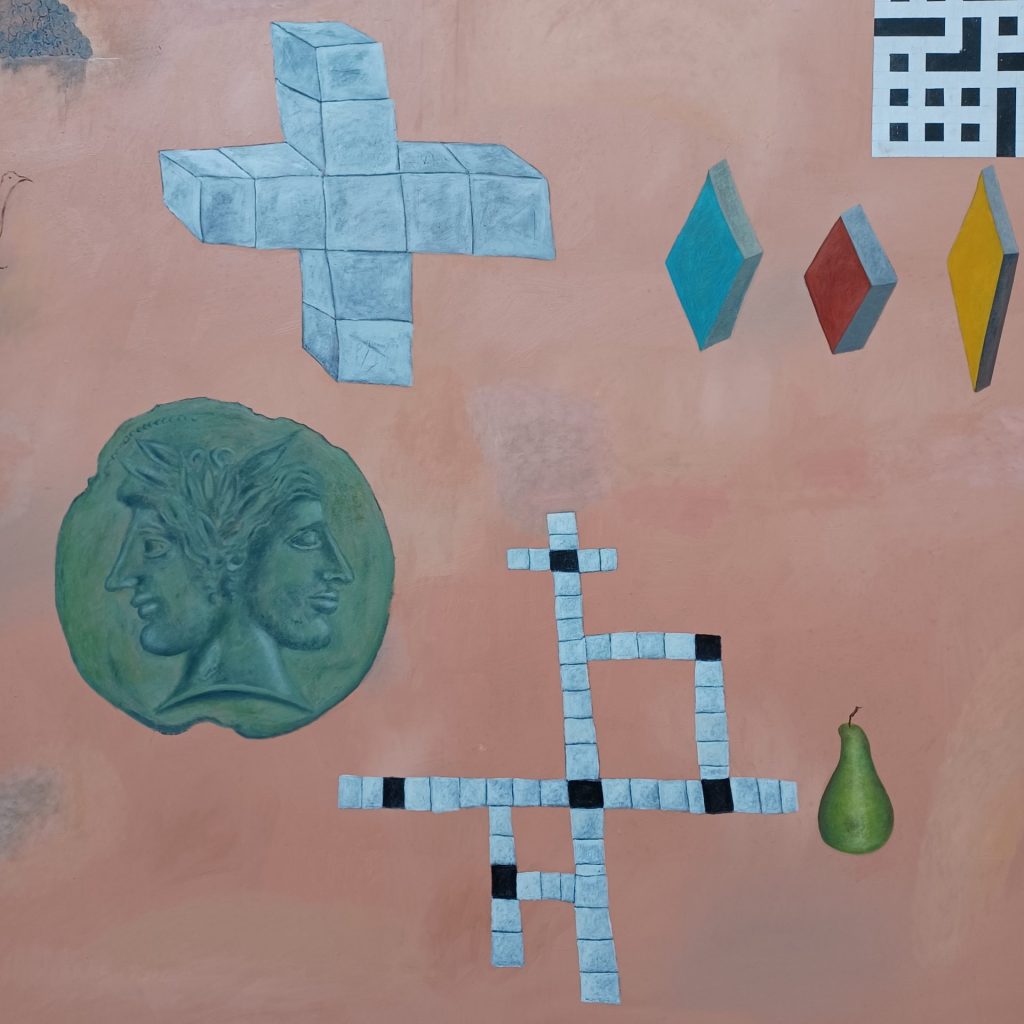
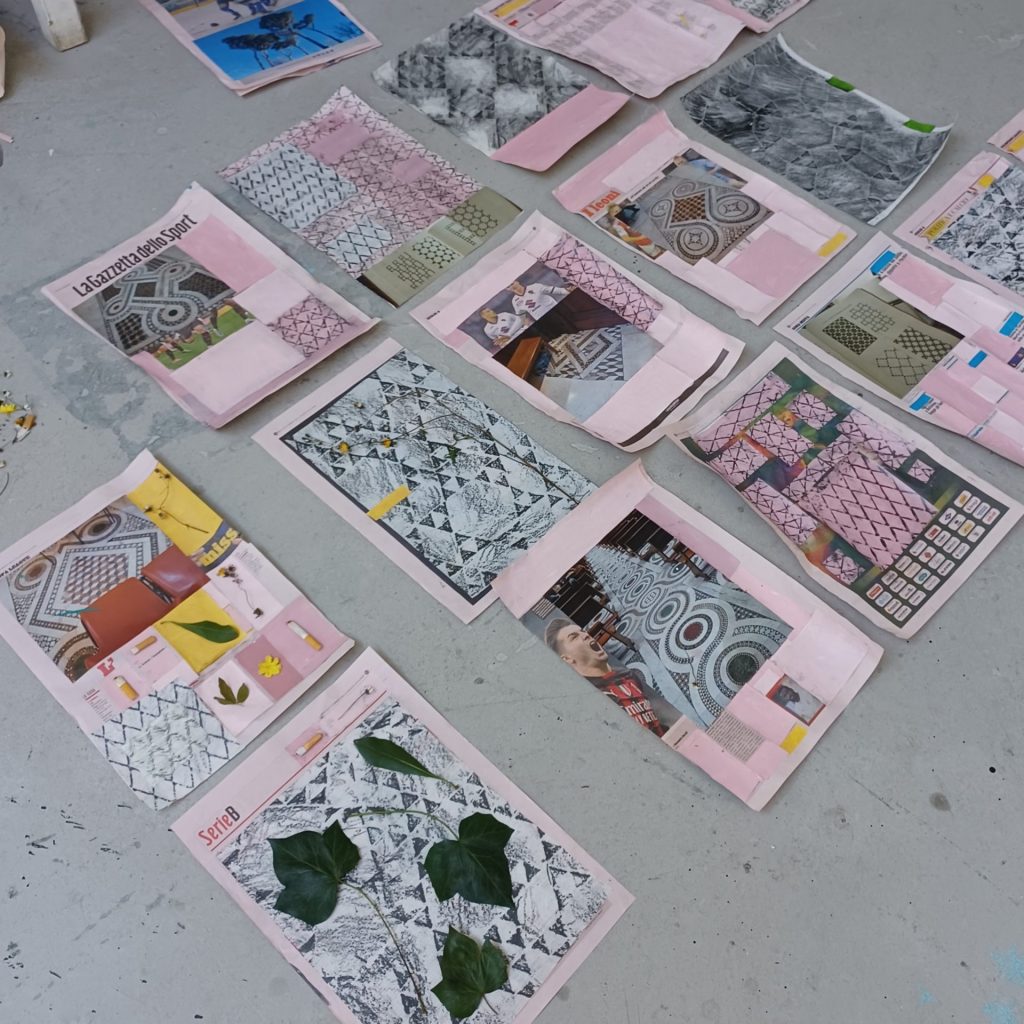
Compositions made by pages of the Italian newspaper La Gazetta dello Sport, flowers, leaves, cigarettes and images of Cosmatesque mosaics lay on the floor of your studio. Could you tell us more about this?
All these elements are being used in new works which use the flower press as a medium. I love the complex form of a flower press and am always attracted to mediums that are both inherently flat and sculptural. Such forms have a front and back as well as an inside and outside. They are an object made up of several parts that, in my case, are painted panels as front and back covers, and inside, collages that can also be seen as individual images as well as a whole. They are similar to books in as much as you ‘leaf’ through them and so also take on a very particular kind of temporal experience through their sequence. I also love the fact that they are about flattening three-dimensional objects, turning them into images, distorting them the way mannerist art might do the figure. Finally, they also seem a kind of depository or archival object, something to record a particular time and place, which feels like an appropriate medium for my time in Rome.
I chose La Gazetta Dello Sport for the foundation of these ‘leaves’ because this newspaper occupies a very particular space in British and Italian culture and, for a long moment at least, a kind of cultural exchange. Growing up in the 90s, Channel Four would have a weekly magazine programme called Football Italia, the first time Italian football would be broadcast in the UK. The show ran for over a decade and was presented by James Richardson, who symbolised, along with the show, a more outward-facing, urbane, and continental Britain, through a public media channel that still maintained the vestiges of its radical beginnings. There is a section of the show where Richardson reads out and translates the sports headlines from the pink newspaper La Gazzetta dello Sport. Aside from the formal qualities of the newspaper, which I love, there is something oddly poignant about the image of a British journalist casually reading Italian newspapers to football lovers in the UK. Although Richardson’s cult status shows the enduring legacy of this programme, it feels completely impossible that under the present political climate such a show would ever be commissioned now.
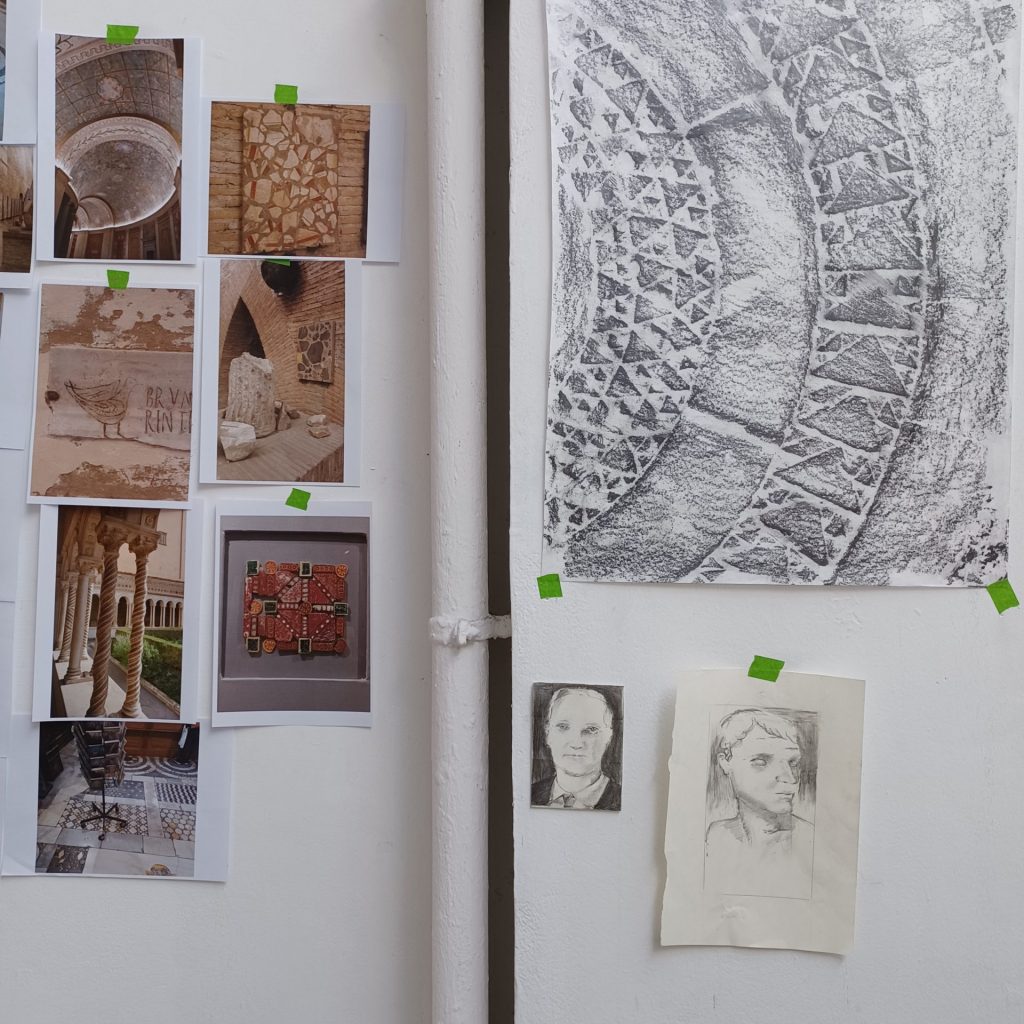
Cosmatesque – a medieval form of mosaic – offers my practice in Rome a study in contrasts. Unlike Mannerism, Cosmatesque is a fundamentally abstract, geometric, rationalised, highly decorative form of space building. I started visiting many medieval churches around Rome with Cosmati floors and found particular affinity with San Clemente. I was able to take several rubbings of the mosaics there through the generosity of Father Paul, the head of the order of Irish Benedictine monks that have been looking after the church for centuries. Like many churches in Rome, I was struck with the way San Clemente has a vertical, layered structure. Below the 13th Century Cosmati floor are foundations of an earlier Christian church with 8th to 11th Century frescos, below this there is a Roman Mithraeum and below this, a liquid floor created by the rushing Tiber. I liked the idea of taking a fragmented index of these mosaic floors, which are themselves made up of spoliated stone fragments of other roman ruins, and piling them on top of each other or compressing them into my painting-object which included newspaper collages – a kind of paper mode of mosaic. I see the flower presses as being very flexible containers for many concerns within my practice – a depository for research, an archive of my time in Rome, a model for painting that sits between dimensions, and a way to quite literally flatten objects into images to explore this mannerist space in a direct way.
